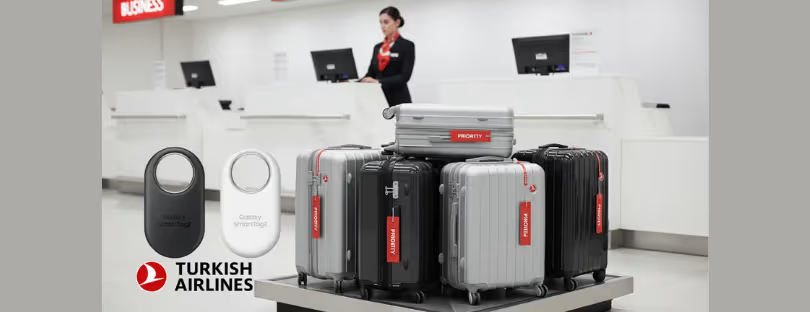
Digital Travel: How SITA, Amadeus, and Idemia are Shaping the Future of Biometrics in Airports
As we bounce back from the pandemic, air travel is taking on a new face, marked by a rush toward digital technologies. With a sharp rise in passenger numbers, airports around the world are stepping up to embrace cutting-edge solutions aimed not just at enhancing operational capacity but also improving the overall experience of travelers.
Let’s dive into how these advancements in biometric technology and sustainability are reshaping the aviation landscape.
Understanding the Shift in Aviation Dynamics
The aviation sector is no longer just about baggage claims and boarding passes. It’s a dynamic ecosystem that is heavily investing in digital transformation to recover from pandemic lows. The adoption of biometric technologies has become the leading edge of this transformation, serving as a vital tool in improving efficiency and safety.
The Role of Digital Technologies
Digital technologies have emerged as the backbone of modern air travel, instrumental in addressing prolonged issues that passengers face. From long lines at check-in to cumbersome security checks, biometrics is creating smoother pathways for travelers. SITA‘s 2024 Passenger IT Insights report underscores this transition, revealing the compelling benefits of biometric identity verification.
Why Biometrics?
Biometrics provides several advantages in air travel, including:
- Reduced waiting times: Automated systems expedite processing.
- Improved security: Enhanced identity verification reduces fraud.
- Seamless experiences: Travelers can move through checkpoints with minimal friction.
With these advantages, it’s clear why airports are investing in these technologies.
A Global Look at Digital Transformation
Across the globe, airports are embracing change, with significant developments from Asia to Europe to the Americas. Let’s take a closer look at some of the exciting implementations taking place.
Innovations at Singapore’s Changi Airport
Singapore’s Changi Airport has taken a bold step by integrating biometric immigration screening. As reported by Nikkei Asia, citizens and long-term residents can now seamlessly enter or exit the country using facial scans, bypassing the need for passports. This level of convenience is revolutionary!
Benefits for Key Stakeholders
This implementation benefits multiple parties:
- Travelers enjoy faster processing.
- Airlines see quicker turnarounds.
- Governments can better monitor immigration, enhancing security.
Transformational Efforts in Norway
Meanwhile, Norway’s airports are undergoing a thorough digitization process, thanks to a partnership between Avinor and Amadeus. By launching cloud-based systems for managing operations, these airports are set to enhance passenger experiences significantly.
Features of the Digital Overhaul
The initiative includes:
- Implementation of self-service check-in kiosks.
- Capture of biometric data for smoother flow.
- Reduction in carbon footprint due to decreased paper usage.
The United States Embracing Change
On the other side of the globe, the Transportation Security Administration (TSA) in the United States is strategically rolling out its second-generation Credential Authentication Technology (CAT-2) in collaboration with Idemia. Although funding remains a hurdle, the aim is to expand this tech to 400 airports by 2030.
The Big Picture of Digital Travel
The push for digital travel is not just about technology; it’s a broader movement toward sustainability and enhanced security. Regula Forensics highlights the importance of accurately verifying travel documents and combatting identity fraud, which not only builds public trust but also ensures safety within air travel ecosystems.
Challenges and Opportunities
As airports evolve, they face unique challenges stemming from the integration of traditional processes with new digital systems. Yet, the opportunities for improving passenger experience through biometrics are almost limitless.
Love It or Loathe It?
While some travelers may appreciate cutting-edge technology, others may find these innovations daunting. How do we ensure that all parties feel comfortable and secure within this changing environment?
- Education: Informing passengers about the benefits of biometrics can ease concerns.
- Adaptation: Ongoing training for staff to manage tech-related queries effectively.
The Future of Biometric Technology in Airports
As we look ahead, it’s important to recognize that the future is bright for biometric technologies within the airline industry. Airports will increasingly leverage AI and other emerging technologies to craft an efficient and user-friendly environment for travelers.
What’s Next?
Key emerging trends to watch for in biometric technologies include:
- Increased automation in passenger processing.
- Enhanced integration of AI for predictive analytics in operations.
- Broader adoption of biometric authentication for security and convenience.
Wrapping It All Up
In a fast-evolving industry, the emphasis on digital transformation and biometric technologies signifies a monumental shift aimed at enhancing passenger safety, experience, and operational efficiency. We are inching towards a world where travel feels seamless, from the moment we check in to the moment we land.









